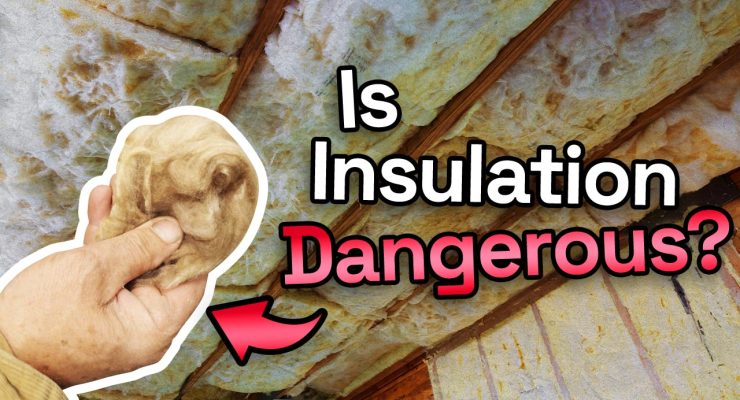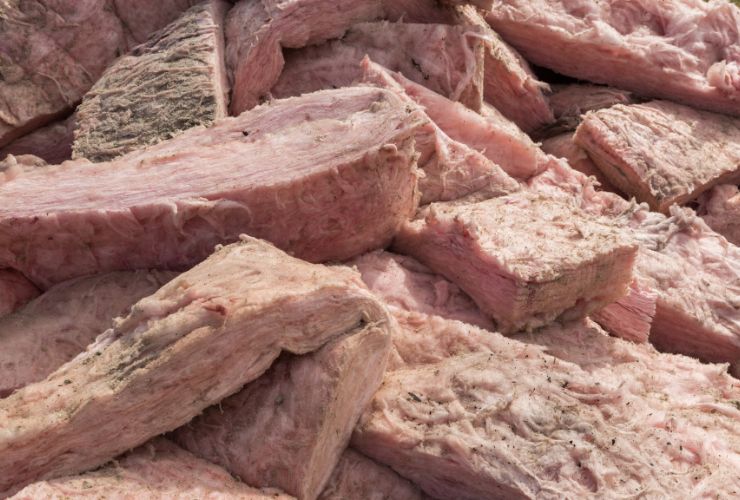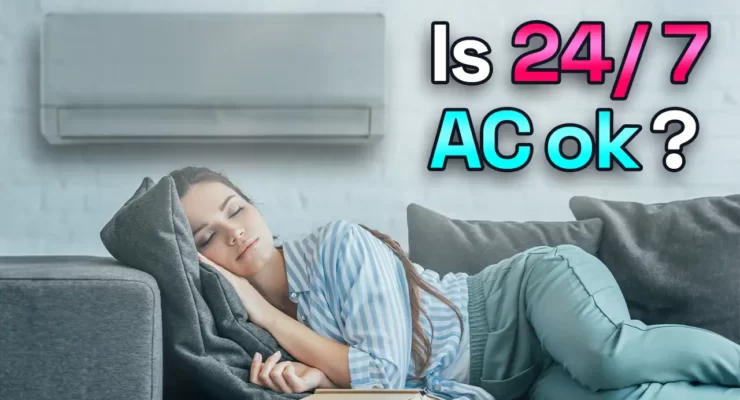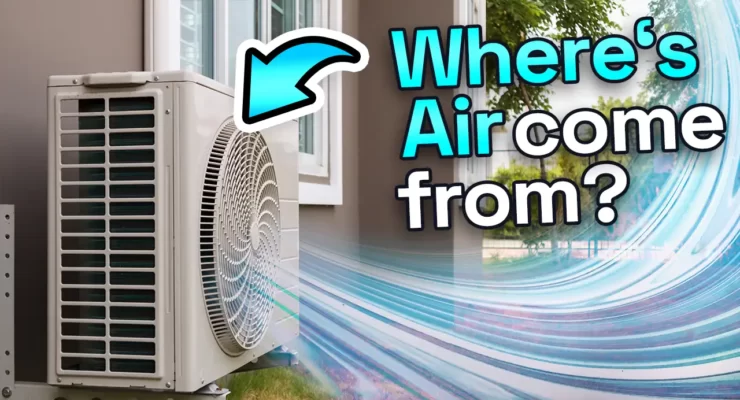
Fast read
Any house needs insulation to maintain a stable temperature throughout the year. It can also improve living conditions within the home and increase energy savings.
However, there could be hazards associated with insulation in homes, particularly if it is disturbed or exposed.
For example, certain insulation materials, such as fibreglass, have the potential to emit airborne particles. When inhaled, it can irritate the skin and lungs.
Using caution and wearing safety gear when working with insulation is essential. Other risks include the possibility of fires being started by materials like foam insulation and the health concerns associated with breathing asbestos fibres prevalent in older insulation products.
When adding or removing insulation from a property. Care must be taken to maintain proper safety standards.
What are the potential dangers of home insulation?
Insulation is an important component of any modern home. Working 24-7 and silently behind the scenes keeps the place cool and warm. It can have a significant effect on the running cost of the house.
As far as energy bills are concerned. Because heat naturally rises in a room and flows from a warm section to the cooler roof section. Insulation slows down the escaping warm air in the winter months.
On the other hand, in summer, hot air from the outside will move to the inside via windows and heat transfer in walls and ceilings, making the house uncomfortably hot. This is when we turn on the air conditioning. Adding substantial amounts of dollars to our electricity bill. An alternative to this energy cost increase is adequate and well-installed insulation.
Simply said, proper insulation lets the homeowner and the family live comfortably in the residence, cutting their energy bill.
Exposed insulation is not unusual, particularly in your ceiling. Exposed insulation in these areas is not a health risk if it is not touched or handled properly. It even makes it easier for homeowners to add additional insulation in the future.
Should insulation become ripped, wet, or mouldy, one’s quality of life in the house can suffer.
Is fibreglass home insulation dangerous?
Fibreglass insulation is a man-made mineral fibre made from various materials, including sand and recycled glass. In Australia and New Zealand, it is one of the most popular forms of insulation. This is because it beats polyester insulation and cellulose insulation in the frequency of application.
Breathing in fibreglass particles can lead to cancer. However, in 2001, the International Agency for Research on Cancer changed its stance on glass wool and rock wool fibres. They no longer consider them to be cancer-causing. These are common elements of fibreglass insulation from the list of known substances with carcinogenic risks to humans [see: NTP, IARC].

Nevertheless, when exposed insulation is present in parts of the house that are used frequently by family members or visitors. That’s when issues can arise. Areas where this could occur, include an unfinished room extension or the garage stud wall where your children may play. In addition, builders can frequently leave the pinkish or yellow, fluffy rolls exposed on worksites or roof cavities.
Fibreglass is generally considered safe when properly installed. This is why using professional home insulation installers is best.
For example, suppose it sits between the plaster ceiling or wall cavities and the brick cavity. There is no way for the fibres to be disturbed and escape. The fibres become airborne only when someone removes them, such as during renovations or demolition. So the trick is to avoid exposure.
Exposed fibreglass
Without a doubt, exposed fibreglass insulation can be hazardous to your health. If your household spends time with exposed fibreglass insulation frequently, you’re at risk of:
- Irritation – Fiberglass irritates the skin. Even if you don’t physically contact the insulation, it might release particles into the air, irritating your skin. Even more alarming, fibreglass irritates the lungs when inhaled, posing significant respiratory dangers over time. If the small particles get into your eyes, serious irritations can follow. Therefore, it is advisable to wear protective equipment.
- Most people are aware of the dangers of fibreglass and stay away, but children are naturally intrigued. As a result, they may come into contact with fibreglass, increasing their risk of itchy skin and allergic reactions. Ensure exposed fibreglass areas in your home are not accessible to exploring children.
- Ongoing contact with fibreglass, can cause what’s called irritant contact dermatitis, a form of skin inflammation. In addition, breathing in the small fibres by working with fibreglass without a quality mask can increase breathing difficulty.
So the rule is – do not disturb and if you have to – wear protection.
Asbestos can be deadly
Few chemicals have acquired the level of longevity that asbestos has. Asbestos is a class of naturally occurring minerals of long silicon-containing crystal fibres. Most companies have removed asbestos from the modern supply chain. The danger is from old home insulations made before 1970 when tiny silicate fibres become airborne if disturbed.
While asbestos in roof cavities or floor insulation may be inactive. Disturbing the flooring/ceiling with insulation can release a long-lasting cloud of dust into the air. This dust has a high probability of containing cancerous asbestos fibres.
Once breathed in, asbestos fibres will be inhaled deep into the lungs, where they stay as long as 30 years, with seemingly no effect. But the fibres irritate the lungs and other body parts they may travel to during that time. Disrupting cell division by interfering with chromosome distribution and changing crucial genetic material.
This increases the chances of developing illnesses such as asbestosis and mesothelioma. Whereby we lose the ability of our lungs to function properly, and in the end, the sufferer will die.
Increased fire hazards from cellulose home insulation
Based on the age and kind of electrical wiring, any brittle wiring in direct contact with insulation could be a fire danger. In addition, any heat-generating item, such as halogen lighting set back into the ceiling, must be free of surrounding insulation.
Cellulose insulation, treated with fire retardants, maintains paper-like qualities, as the name suggests. Therefore, it has the potential to be highly flammable. Fibreglass and Rockwool, on the other hand, are not flammable and in such installation, situations would be safer.
Checking insulation regularly is an integral part of house maintenance
Get your insulation checked by a pro every few years to make sure there’s no mould in your roof. Rats, mice, and other vermin have not made the area their home and in general, the insulation is in good condition and does its job.
The consequences of not having your insulation checked can cost much more than the inspection itself. For example, what started as a slight moisture penetration in the roof via a slightly cracked tile can end in a soaking-wet plaster ceiling. An early roof inspection might have picked up the initial water spots in the insulation and avoided the drama.


